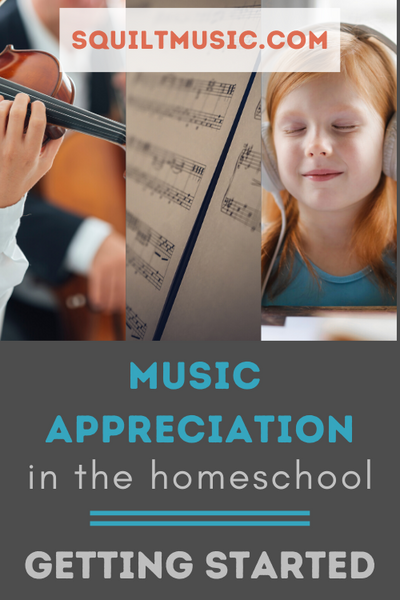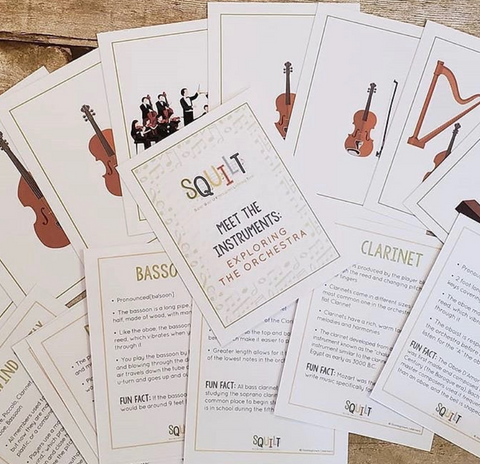Getting Started with Music Appreciation
“Music has the power of producing a certain effect on the moral character of the soul, and if it has the power to do this, it is clear that the young must be directed to music and must be educated in it.” (Aristotle)
Sometimes, however, getting started is the hardest part.

3 Simple Resources
Use the three simple suggestions/resources I've listed here and I think you will be on your way to getting started in music appreciation.
(You are more than welcome to join us at any time in our live lesson membership - SQUILT LIVE! - where I will do all of the teaching for you - but sometimes parents want to explore music on their own before making the membership commitment. )
1. Use a Listening Calendar
Whether you have a structured Morning Time each day or not, it is easy to include music at the beginning of the day.
Super Quiet UnInterrupted Listening Time is just that - a time for everyone to be very quiet and just LISTEN.
Teach your children to quietly listen to a different piece of music each day. Don't make it any longer than three or four minutes. Encourage them to lay their heads down, close their eyes, and just LISTEN. Can they imagine a picture to go with the music? What do they think of while listening?
Use this time as a gift - it can set the tone for your day.
Each month we provide a listening calendar specifically for this purpose - to train children to listen. Our calendar has a theme with curated selections each day. I choose music that is engaging for children.
Recently a mom wrote this about the calendar:
An investment as simple as this - 5 minutes each day - can make a world of difference for your children!
2. Learn About Instruments
As children listen more, they will want to know WHAT they are hearing. Now it is time to teach about basic instruments of the orchestra.Again, short and sweet instruction is best.
A couple of years ago I created the Meet the Instrument Cards, and I had no idea what a need they would fill! These flashcards have beautiful illustrations of the instruments of the orchestra, with facts about each instrument.
What makes them so useful, however, are the videos I have chosen to go with each instrument. The flashcards come with a curated list of videos to demonstrate the sight and sound of the instruments.
Children love learning about the instruments - setting out cards while listening to music, playing games with the instrument matching and bingo cards - and it's all done in such a simple way.
3. Add Living Books
Because we are talking about a simple start to music appreciation, of course living literature will be included.
As you are focusing on learning about beautiful music, fill your home library or get out that library card and add good books to the mix.
There are several lists here on the SQUILT blog that can help:
- 15 Picture Books About Music
- Best Books for Music Appreciation
- Favorite Audiobooks to Teach Children About Composers and Culture
- What Charlie Heard (a music & book pairing)
- John Philip Duck & The Washington Post March (a music & book pairing)
Then, they can start exploring music from different eras of music, and maybe join us in SQUILT LIVE!


